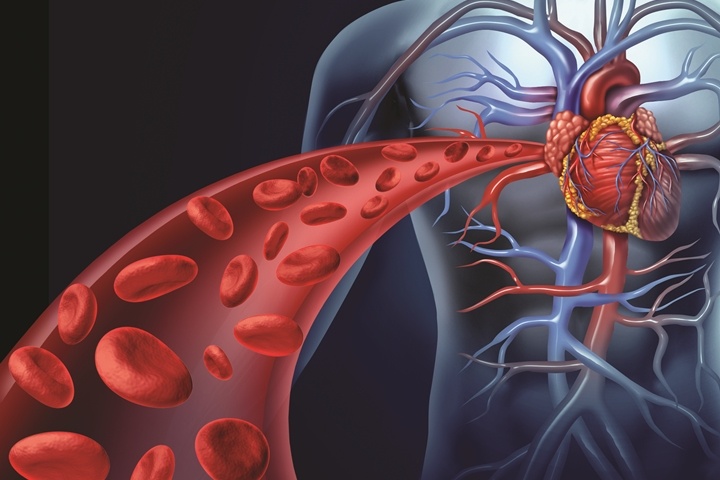
A recent survey from the World Health Organisation found that Ischaemic heart disease and stroke remain the world’s biggest killers, causing an estimated 15.2 million deaths in 2016. These two diseases have now been the world’s leading cause of death for more than 15 years.
Both heart disease and stroke fall under the category of heart and vascular diseases. This category also includes conditions like high blood pressure, congestive heart failure, heart arrhythmia, coronary artery disease, and peripheral artery disease.
In recent years, researchers have been begun developing new treatments for heart and vascular diseases using stem cells. Stem cells are natural cells found within the human body that can regenerate damaged tissue and reduce inflammation.
Researchers believe that these powerful stem cells can be harnessed to repair damage to the heart and vascular system — saving millions of lives each year. This article will share more information about heart and vascular diseases, as well as details of an upcoming research project.
Common types of heart and vascular diseases
Heart and cardiovascular diseases are extremely common, particularly in developed countries. They are conditions that affect the structure or function of the heart and blood vessels in some way. The most common types of heart and vascular diseases includes:
- Abnormal heart rhythms (arrhythmias)
Certain illnesses and congenital diseases cause abnormal heart rhythms. This may cause the heart to change in tempo unexpectedly or cause it to beat at a rapid rate. - Coronary artery disease (hardening of the arteries)
This disease is caused by the arterial walls accumulating plaque. When this happens, the size of each affected artery narrows, which makes it more difficult for the heart to pump blood effectively. - Heart attack (myocardial infarction)
A heart attack occurs when the blood supply to the heart is stopped. The heart muscle will quickly become damaged without the steady supply of oxygen that the blood brings with it. If blood flow is not re-established, a heart attack will quickly become fatal. - Heart failure
Heart failure occurs when the heart is not pumping blood as well as it should. This can be caused by a variety of different factors including lifestyle and disease. - Heart muscle disease (cardiomyopathy)
This is a hereditary or acquired disease where the heart muscle struggles to pump blood around the body. - Heart valve disease
The heart valves are the major inlets and outlets of blood pumped to-and-from the heart. Heart valve disease occurs if these valves are not functioning correctly. - Congenital heart disease
Heart valve disease describes any defects affecting these valves caused by genetic factors. - Pericardial
Pericardial occurs when the lining of the heart becomes inflamed. This is often caused by an infection of some sort. - Aorta disease and Marfan syndrome
The aorta is an artery that passes blood from the heart to the rest of the body. Both Aorta disease and Marfan syndrome can cause the aorta to widen or tear. This potentially leads to a variety of health problems including high high blood pressure, connective tissue disorders, and atherosclerosis.
The causes of the conditions that affect the heart and cardiovascular system can vary. Some conditions are caused by congenital defects while others can occur due to lifestyle factors like a poor diet or lack of exercise.
Recent stem cell research project to treat myocardial infarction
There are currently 13 stem cell research projects in progress which are looking at the use of stem cells to treat various heart and vascular diseases. Some of these projects are clinical trials which are building on previously successful studies.
These successful studies include multiple research projects which have found that stem cells can improve the heart’s ability to function after a myocardial infarction. Researchers suspect that the stem cells are reducing inflammation levels and regenerating heart tissue. Current studies are attempting to confirm the efficacy and safety of stem cell treatments for myocardial infarction.
Stem cells have even been used to treat children who suffer from a birth defect called Hypoplastic left heart syndrome (HLHS). This congenital condition causes the left side of the heart to not form correctly. This makes it difficult for the heart to pump blood effectively. Researchers have discovered that an infusion of stem cells can encourage the left side of the heart to grow in infants.
Researchers are also using stem cells to grow new heart and cardiovascular components including heart valves, heart muscle tissue, and arteries. If this research comes to fruition, patients may be able to have transplants using organs and tissue that have been created from their own stem cells.
If you are interested in learning more about the stem cell research projects which may lead to treatments for heart and vascular diseases, download the our latest Clinical Update PDF. This document details some of the latest research projects that may lead to treatments for conditions like myocardial infarction and hypoplastic left heart syndrome.
Sources
http://www.who.int/news-room/fact-sheets/detail/the-top-10-causes-of-death
https://www.nhlbi.nih.gov/sites/default/files/medi/doc/Fact_Sheet_Know_Diff_Design.508_pdf.pdf
https://www.cdc.gov/ncbddd/heartdefects/hlhs.html
{{cta(‘d62560c2-336a-4f88-9683-44a37a5bd7fd’)}}


